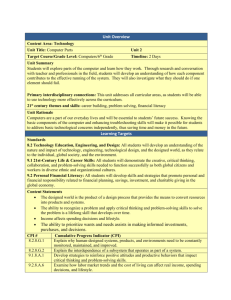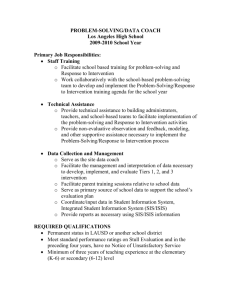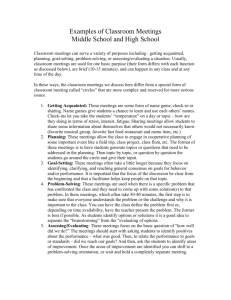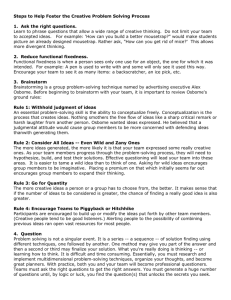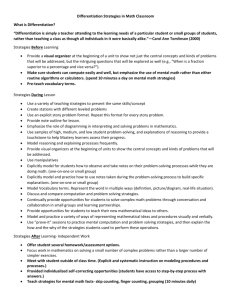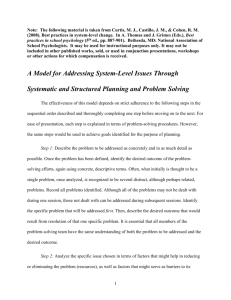A PROBLEM SOLVING PARADIGM (PSP):
advertisement
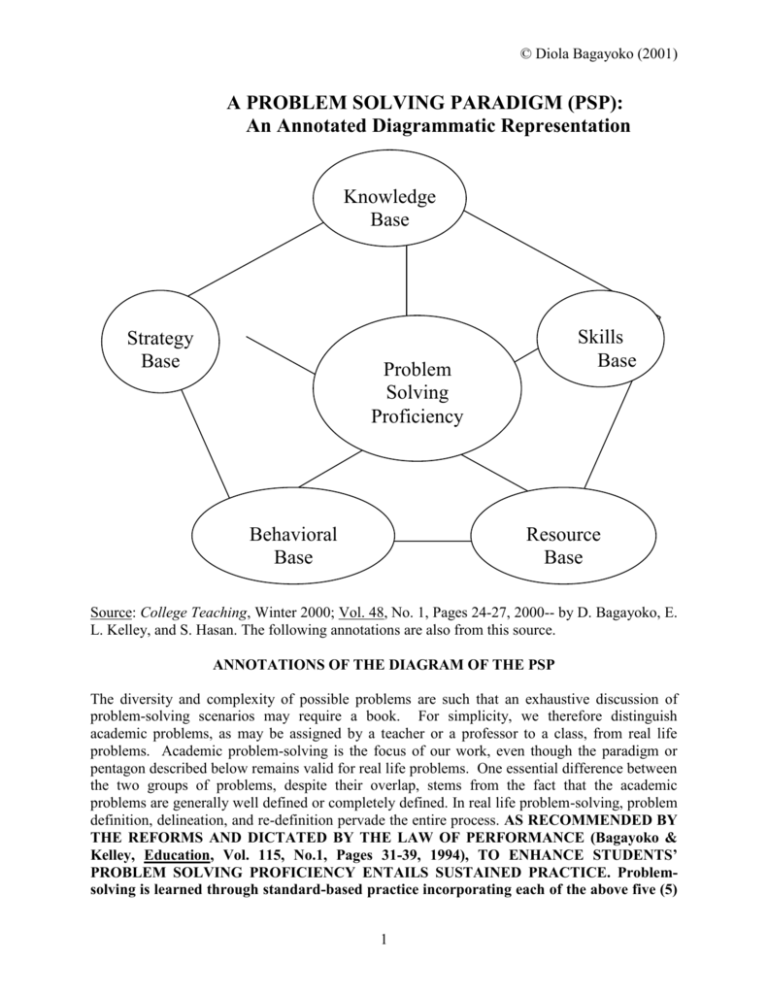
© Diola Bagayoko (2001) A PROBLEM SOLVING PARADIGM (PSP): An Annotated Diagrammatic Representation Knowledge Base Strategy Base Skills Base Problem Solving Proficiency Behavioral Base Resource Base Source: College Teaching, Winter 2000; Vol. 48, No. 1, Pages 24-27, 2000-- by D. Bagayoko, E. L. Kelley, and S. Hasan. The following annotations are also from this source. ANNOTATIONS OF THE DIAGRAM OF THE PSP The diversity and complexity of possible problems are such that an exhaustive discussion of problem-solving scenarios may require a book. For simplicity, we therefore distinguish academic problems, as may be assigned by a teacher or a professor to a class, from real life problems. Academic problem-solving is the focus of our work, even though the paradigm or pentagon described below remains valid for real life problems. One essential difference between the two groups of problems, despite their overlap, stems from the fact that the academic problems are generally well defined or completely defined. In real life problem-solving, problem definition, delineation, and re-definition pervade the entire process. AS RECOMMENDED BY THE REFORMS AND DICTATED BY THE LAW OF PERFORMANCE (Bagayoko & Kelley, Education, Vol. 115, No.1, Pages 31-39, 1994), TO ENHANCE STUDENTS’ PROBLEM SOLVING PROFICIENCY ENTAILS SUSTAINED PRACTICE. Problemsolving is learned through standard-based practice incorporating each of the above five (5) 1 © Diola Bagayoko (2001) categories of the paradigm. To develop the problem-solving expertise of students, we propose the devotion of concentrated and sustained efforts to the following five categories. We reiterate that the order below is not one of decreasing or increasing importance. 1. Cognitively condensed declarative knowledge base. Meaningfully organized knowledge is to be distinguished from a set of disjointed pieces of information. An often neglected part of the knowledge base, consisting of the applicable language or information transmission modes, is a critical one. It enables learning! 2. Cognitively condensed procedural knowledge (skill) base. This category has some overlap with the first, even though it is distinct. This distinction is apparent in problem-solving situations where physical dexterity may be required. The knowledge that one should divide 300 by 20 to get equal numbers for each of 20 students (Category 1) is different from the skill for carrying out the division correctly to get 15. 3. Resource base. The nature of this base may vary drastically depending on the problem. Human and materials resources are both understood. For ordinary academic problem-solving, calculator, protractors, computers and applicable software products, and reference books and journals are typical material resources. Creative thinking "requests" that this resource base not be limited to the “initially perceived” one. This is particularly critical for general problem-solving (use of DNA identification to solve old cases that stalled before DNA "finger-printing" was known). 4. Strategy and Experience (or practice) base. This experience may be specific to the kinds of problem or be one that is transferable. Practice enhances proficiency, as dictated by the law of performance [Bagayoko & Kelley 1994]. Strategy or method, in this category, is not to be confused with procedural knowledge as referenced above in Category 2. Having the knowledge, the skills, and the resources to execute some tasks is one thing, strategy/experience can lead to some order(s) of execution of these tasks for optimal results (i.e., fastest approach, for example). 5. Behavioral base. The affective domain has a bearing on the outcome of problemsolving attempts. In particular, this category is distinguished from Category 4 by noting that the knowledge of, or experience with, a strategy or method is not sufficient for guaranteeing the self-discipline that is sometimes needed to adhere to it, when applicable. Individual reactions to various constraints in problem-solving (i.e. panic attack as opposed to strong focus), while partly determined by the other categories, strongly hinge on the emotional and behavioral traits, partly molded through practice. A good behavioral base forces us to read thoroughly a problem before solving it! This paradigm, when consistently and persistently applied through classroom work, graded homework assignments, etc. will indubitably lead to higher academic achievements in state and national standardized tests. The key is to pay attention to each of the five categories, to ensure knowledge & skills, and to mold experience and behavior through standard-based practice (graded homework, tests, summer reading). Oh, "acing" tests, from pre-K to graduate school, is just solving some problems! 2




